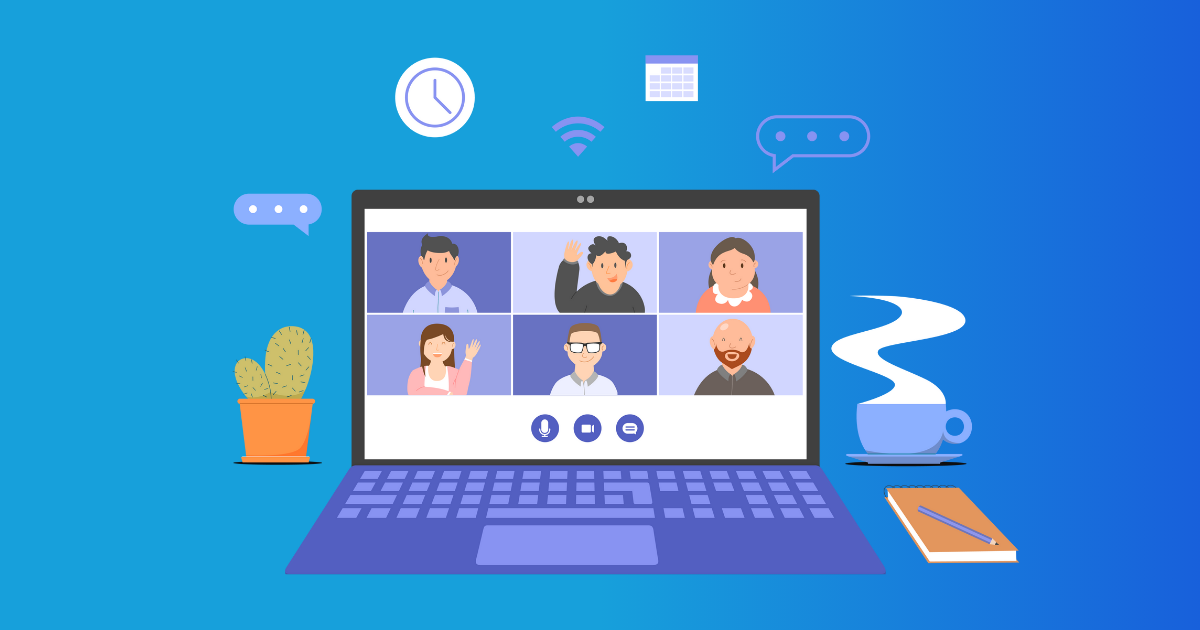Table of Contents
- Understanding Spotlight Speaker for Others Only in Jitsi Meet
- Why Customize Spotlight Views?
- What Jitsi Offers by Default
- Customization Tips to Spotlight Speaker for Others Only
- 1. Use the localVideo and remoteVideo Stream Controls
- 2. Customize “Filmstrip” and “Active Speaker” Settings via UI Options
- 3. Pin Speaker Jitsi Tips
- 4. Leveraging Jitsi API for Spotlight Control
- 5. Real-World Case: Custom Jitsi Deployment for Remote Learning
- How Active Speaker Jitsi Differs from Speaker View and Pin Speaker Jitsi
- Step-by-Step Guide: Pin Speaker Jitsi for Others Only Using API
- Helpful Long-Tail Keywords and How to Use Them
- Security and Trust Considerations in Jitsi Customization
- Conclusion
- Ready to Tailor Your Jitsi Meet Setup?
If you’ve been using Jitsi Meet for your virtual meetups, you’ve probably thought about customizing how your speakers show up. There’s this cool trick where you can spotlight a speaker just for others. This basically means everyone else sees the spotlighted speaker while you can have a different view. Pretty neat, right? It helps keep things manageable during a call. This article will walk you through these customization tips, focusing on active speaker, speaker view, and pin options. Whatever your experience level with Jitsi, these steps will help you take charge of speaker views like a pro.
Understanding Spotlight Speaker for Others Only in Jitsi Meet
Spotlighting during video calls is all about putting one participant’s video front and center for everyone else’s screens. By default, Jitsi Meet automatically highlights whoever’s talking. But what if you want the rest to see someone while having a different view yourself? That’s where this customization comes in handy.
Say you’re the moderator or just want to keep tabs on another presenter separately—this feature will come in handy for creating that tailored viewing experience.
Why Customize Spotlight Views?
- Moderator Control: Keep your view steady while controlling what others see.
- Selective Attention: Let the group focus on a key speaker while you manage additional observations.
- Focus Management: Different roles in a call—like presenter, listener, moderator—benefit from varying views.
What Jitsi Offers by Default
Jitsi Meet comes with some default options for speaker views:
- Active Speaker View: The video automatically switches to the person currently speaking.
- Tile or Grid View: Displays all participants equally, no spotlight.
- Pin Speaker: Let you lock a participant’s video on your screen, no matter who’s chatting away.
However, Jitsi doesn’t have a quick switch to spotlight a speaker only for others, so you’ll need to tweak the settings a bit.
Customization Tips to Spotlight Speaker for Others Only
Here’s a rundown of some practical ways to nail that speaker spotlight configuration in Jitsi Meet.
1. Use the localVideo and remoteVideo Stream Controls
Developers or moderators can tweak video streams on their end using Jitsi’s lib-jitsi-meet API. With these tools, you can control the pinned or spotlighted views from your side—and send that out to others through server controls.
If you’ve got a Jitsi server or use an embedded iFrame API, set up some listeners to control spotlighting just for participants while you hang onto a different view.
Example:
- The moderator spots a speaker for the audience.
- They see a grid view or pin someone else on their screen.
2. Customize “Filmstrip” and “Active Speaker” Settings via UI Options
In the interface_config.js file (for self-hosted setups), you can tweak settings that play into spotlight behavior:
// Example configurations
ENABLE_FEATURES = {
FILMSTRIP_ENABLED: true,
TILEVIEW_ENABLED: true,
// active speaker options
DISABLE_AUTO_FOCUS: false,
};Toggling DISABLE_AUTO_FOCUS gives you control over whether the active speaker view changes automatically. This way, you can pin speakers locally without getting derailed.
Benefits:
- Keep your own view stable, and let others enjoy the active speaker mode.
- Blend with custom UI plug-ins for even more control.
3. Pin Speaker Jitsi Tips
Pinning a participant fixes their video on your screen. By pinning locally and running server-side instructions, you can emulate a “spotlight for others only” view.
How-To:
- Pin the participant’s video you want visible locally.
- Share an instruction (using chat or your server setup) so others spotlight someone else.
For mainstream Jitsi services, this involves manual steps. But custom deployments can offer admin-specific scripts for automation.
4. Leveraging Jitsi API for Spotlight Control
Using Jitsi’s external API, you can embed Jitsi Meet into your projects while controlling participant views with commands like executeCommand('selectParticipant', id);.
Toggle your own participant’s view to “pinned” and dispatch commands to toggle the spotlight for other viewers.
5. Real-World Case: Custom Jitsi Deployment for Remote Learning
I collaborated with a team conducting remote language sessions on a personal Jitsi instance. The challenge was to zoom in on the speaking student for the class, while the trainer got a full gallery overview to monitor everyone.
By fine-tuning interface_config.js and integrating lib-jitsi-meet events, we made it so:
- Trainers spotlight the speaking student for others.
- Trainers see the entire group in a grid.
- Spotlights auto-switch with each new speaker.
This aligned the active speaker and moderator demands perfectly. Sure, it required some coding but it was totally worth it.
How Active Speaker Jitsi Differs from Speaker View and Pin Speaker Jitsi
Understanding these terms will simplify what you’re aiming to customize.
| Term | Description | Who Controls |
|---|---|---|
| Active Speaker | Auto switches view to whoever is talking. | System/Default in Jitsi |
| Speaker View | Focused layout, possibly with manual control. | User/Client |
| Pin Speaker | Manually locks a participant’s video on one’s screen. | User |
- Active speaker is just automatic.
- Speaker view establishes a layout focus.
- Pinning gives the user extra control.
To spotlight solely for others, you have to push beyond typical pin or active speaker setups.
Step-by-Step Guide: Pin Speaker Jitsi for Others Only Using API
For developers or advanced users with their own Jitsi setups, here’s a guide:
-
Initialize your Jitsi Meet embedded frame using the External API:
const domain = 'meet.jit.si'; const options = { roomName: 'your-room-name', width: 800, height: 600, parentNode: document.querySelector('#meet') }; const api = new JitsiMeetExternalAPI(domain, options); -
Keep track of active speaker shifts:
api.addEventListener('activeSpeakerChanged', function (event) { console.log('Active speaker ID:', event.id); }); -
Spotlight a participant just for others programmatically:
Send a message out to participant clients that specify which participant to pin or spotlight.
// To pin another participant on your view: api.executeCommand('pinParticipant', 'participantID'); // To share the instruction with others: sendSpotlightCommandToOthers('participantID'); -
On receiving this, clients perform:
api.executeCommand('selectParticipant', 'participantID');
This keeps those highlighted moments intact for projectors or specific participants as needed while maintaining your independent view.
Helpful Long-Tail Keywords and How to Use Them
To optimize for search engines and help you find what you’re looking for, here are some phrases related to our topic:
- “How to spotlight speaker only for others in Jitsi Meet”
- “Customize active speaker view in Jitsi Meet”
- “Pinning participant video for others only jitsi”
- “Best settings for speaker view jitsi Meet”
- “Jitsi Meet active speaker customization tutorial”
These keywords are sprinkled throughout, guide your searches wisely.
Security and Trust Considerations in Jitsi Customization
Jitsi Meet’s open-source nature ensures transparency. When applying customizations using APIs or plugins:
- Stick to updated Jitsi server and client versions to fend off vulnerabilities.
- Sanitize all inputs while embedding or developing to prevent misuse.
- Use Jitsi’s encryption features for extra safety.
- Be upfront with participants about view customizations or recordings.
Following these steps keeps your Jitsi setups secure and dependable.
Conclusion
To spotlight a speaker just for others in Jitsi Meet, you’ll blend user settings, pinning preferences, and possibly some API coding. Whether you’re a casual user or developer running your own Jitsi server, a handle on active speaker, speaker view, and pin options will give you the power to shape how folks appear to one another during calls.
These tips enhance meeting focus, give moderators control, and elevate participant experiences. Play around with pinning and dig into the API if you’re hosting your server. Stay vigilant with security measures and regularly refresh your software.
Want to control Jitsi Meet speaker views with confidence? These strategies are a great foundation, informed by real-world applications I’ve worked on.
Ready to Tailor Your Jitsi Meet Setup?
Start trying out these tips. If you’ve got a self-hosted Jitsi server, dive into interface_config.js, experiment with manual pinning, and explore the Jitsi External API for more sophisticated spotlighting.
New to all of this? Begin by pinning speakers during meetings and see how active speaker and speaker view modes function.
Your thoughts or questions are welcome! Feel free to reach out for help or share your experiences with Jitsi custom setups.
Seize control of your virtual meetings today.
References:
- Jitsi Meet GitHub Handbook
- Jitsi Meet External API Guide
- Security best practices: Jitsi Encryption
- Real-world case insights from Avkash Kakdiya’s consulting experience with Jitsi implementations
FAQ
It means you can highlight the active speaker’s video for all participants except yourself, allowing you to see different views.
You can pin a speaker by clicking on their video and selecting the 'Pin' option. This keeps their video visible regardless of who is speaking.
Active speaker view automatically switches to whoever is talking, while speaker view or pin speaker lets you fix a participant’s video on your screen.
With certain configuration tweaks and advanced settings, yes. This article explains practical ways to achieve that.
Jitsi Meet is open-source and secure but always ensure your server and clients use the latest versions to avoid vulnerabilities.


